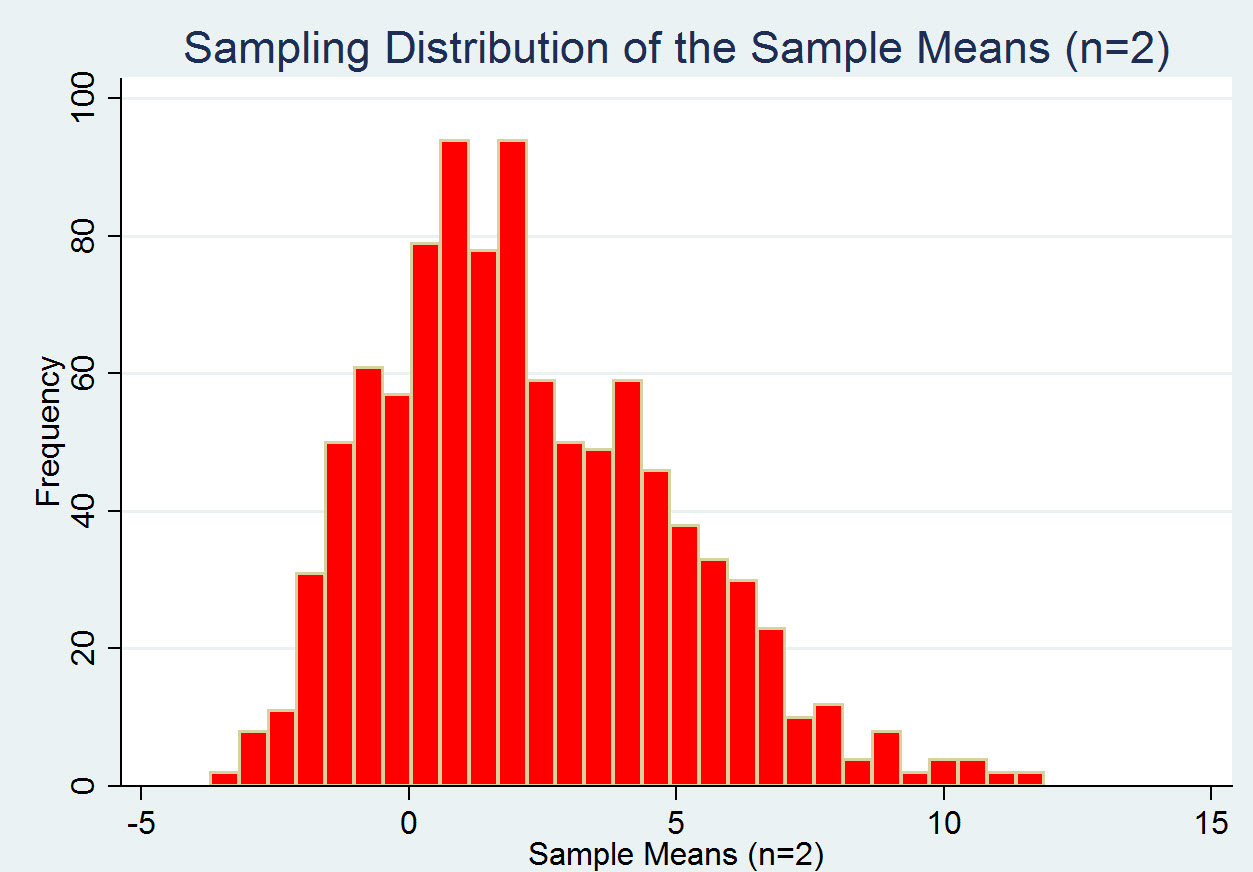

If we’re sampling with replacement, then the ?10\%? rule tells us that we can assume the independence of our samples. If the original distribution is normal, then this rule doesn’t apply because the sampling distribution will also be normal, regardless of how many samples we use, even if it’s fewer than ?30? samples.

So if the original distribution is right-skewed, the sampling distribution would be right-skewed and if the original distribution is left-skewed, then the sampling distribution will also be left-skewed. If we take a large number of samples (at least ?30?), then we typically consider that to be enough samples in order to get a normally distributed sampling distribution of the sample mean.īut when we use fewer than ?30? samples, we don’t have enough samples to shift the distribution from non-normal to normal, so the sampling distribution will follow the shape of the original distribution. In other words, we need to take at least ?30? samples in order for the CLT to be valid. In the case of the sampling distribution of the sample mean, ?30? is a magic number for the number of samples we use to make a sampling distribution. In general, we always need to be sure we’re taking enough samples, and/or that our sample sizes are large enough. Often we’ll be told in the problem that sampling was random. There are always three conditions that we want to pay attention to when we’re trying to use a sample to make an inference about a population.Īny sample we take needs to be a simple random sample. We can find the total number of samples by calculating the combination In fact, if we want our sample size to be ?n=3? girls, we could actually take a sample of every single combination of ?3? girls in the class. So how do we correct for this? Well, instead of taking just one sample from the population, we’ll take lots and lots of samples. Similarly, if you instead just happened to choose the three shortest girls for your sample, your sample mean would be much lower than the actual population mean. If you happened to pick the three tallest girls, then the mean of your sample will not be a good estimate of the mean of the population, because the mean height from your sample will be significantly higher than the mean height of the population. Let’s say there are ?30? girls in your class, and you take a sample of ?3? of them. Then, based on the statistic for the sample, we can infer that the corresponding parameter for the population might be similar to the corresponding statistic from the sample.Ĭonsider the fact though that pulling one sample from a population could produce a statistic that isn’t a good estimator of the corresponding population parameter.įor example, maybe the mean height of girls in your class in ?65? inches. In the same way that we’d find parameters for the population, we can find statistics for the sample.


 0 kommentar(er)
0 kommentar(er)
